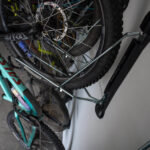Harley-Davidson three-wheel motorcycles, often referred to as trikes, are engineered to deliver a unique riding experience, blending iconic styling with advanced technology. A key focus in their design is rider safety, achieved through sophisticated braking and control systems. These systems are specifically tailored to the dynamics of three-wheeled vehicles, ensuring stability and confidence in various riding conditions.
Linked Braking for Superior Stopping Power
One of the fundamental safety features is Linked Braking. As the name suggests, this system electronically connects the front and rear brakes. This linkage is crucial for trikes, as it provides enhanced stopping power, especially necessary for effectively halting a heavier, three-wheeled machine when required. By distributing braking force across all wheels, Linked Braking contributes to shorter stopping distances and improved control during emergency braking situations.
Cornering Enhanced Anti-Lock Braking System (C-ABS) for Confident Turns
Taking safety a step further, Harley-Davidson incorporates the Cornering Enhanced Anti-Lock Braking System (C-ABS). This intelligent system goes beyond standard ABS by considering the lateral acceleration of the trike when cornering. C-ABS dynamically optimizes brake pressure based on the available traction while leaning into a turn. By calculating the lateral grip, it adjusts brake pressure to help maintain the intended path, preventing wheel lock-up and enhancing stability during cornering maneuvers. Complementing this, Cornering Enhanced Electronically Linked Braking further refines brake pressure distribution between the front and rear wheels, based on lateral acceleration, further assisting the rider in maintaining control through turns.
Traction Control and Drag-Torque Slip Control: Maintaining Grip in All Conditions
To manage wheel spin during acceleration, Harley-Davidson employs Traction Control. Furthermore, Cornering Traction Control extends this functionality by factoring in lateral acceleration. This sophisticated system prevents rear wheel slippage by balancing engine torque with side slip, ensuring appropriate power delivery to the wheels, particularly when accelerating out of corners.
Conversely, Drag-Torque Slip Control and Cornering Drag-Torque Slip Control address excessive rear-wheel slip during deceleration. These systems are designed to mitigate skidding that can occur from abrupt downshifts or deceleration on slippery surfaces. By intelligently adjusting engine torque, these features help maintain rear-wheel traction during deceleration, enhancing stability and control in challenging conditions.
In essence, while the rider retains command over speed, steering, and direction, Harley-Davidson’s Rider Safety Enhancements work in the background, modulating brake pressure and powertrain torque. The goal is to ensure that the forces at the tires remain within the available grip limits, ultimately contributing to a safer and more controlled riding experience on Harley-Davidson three-wheel bikes.

